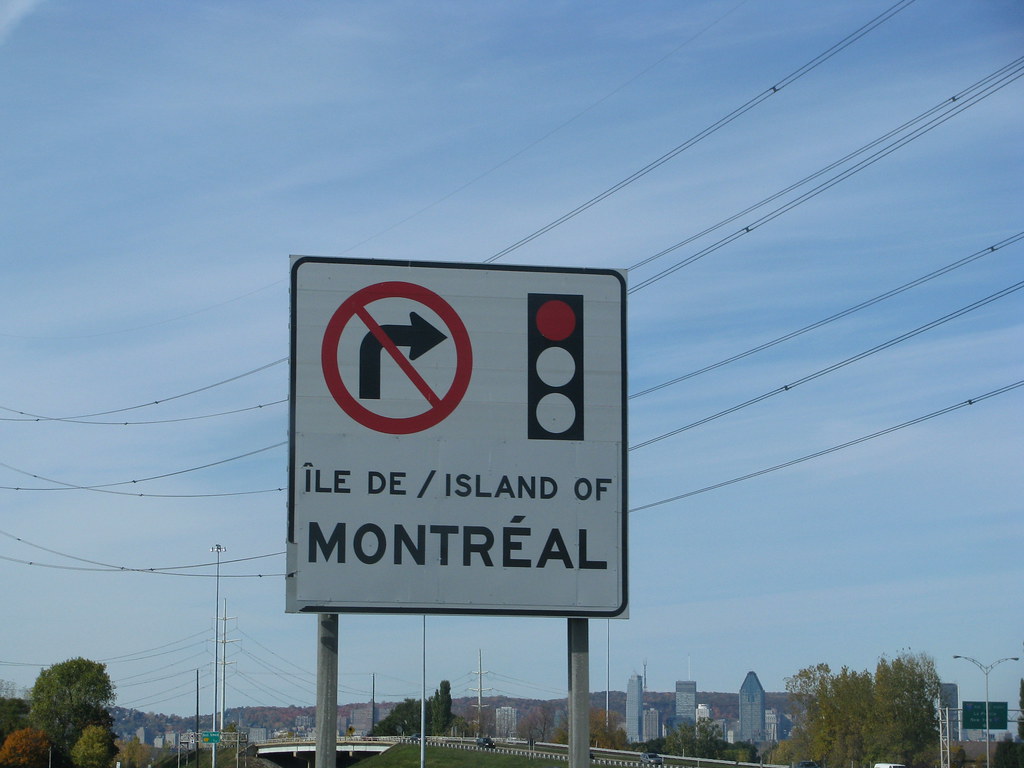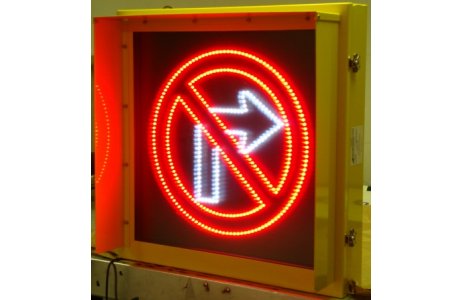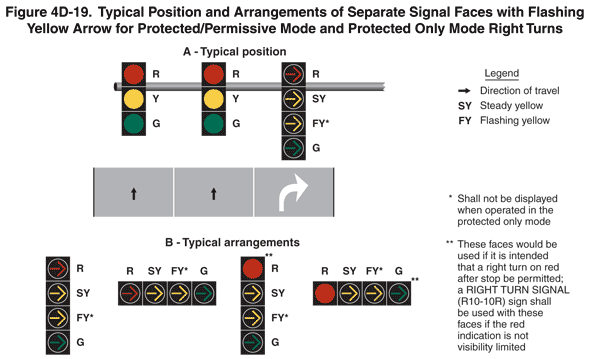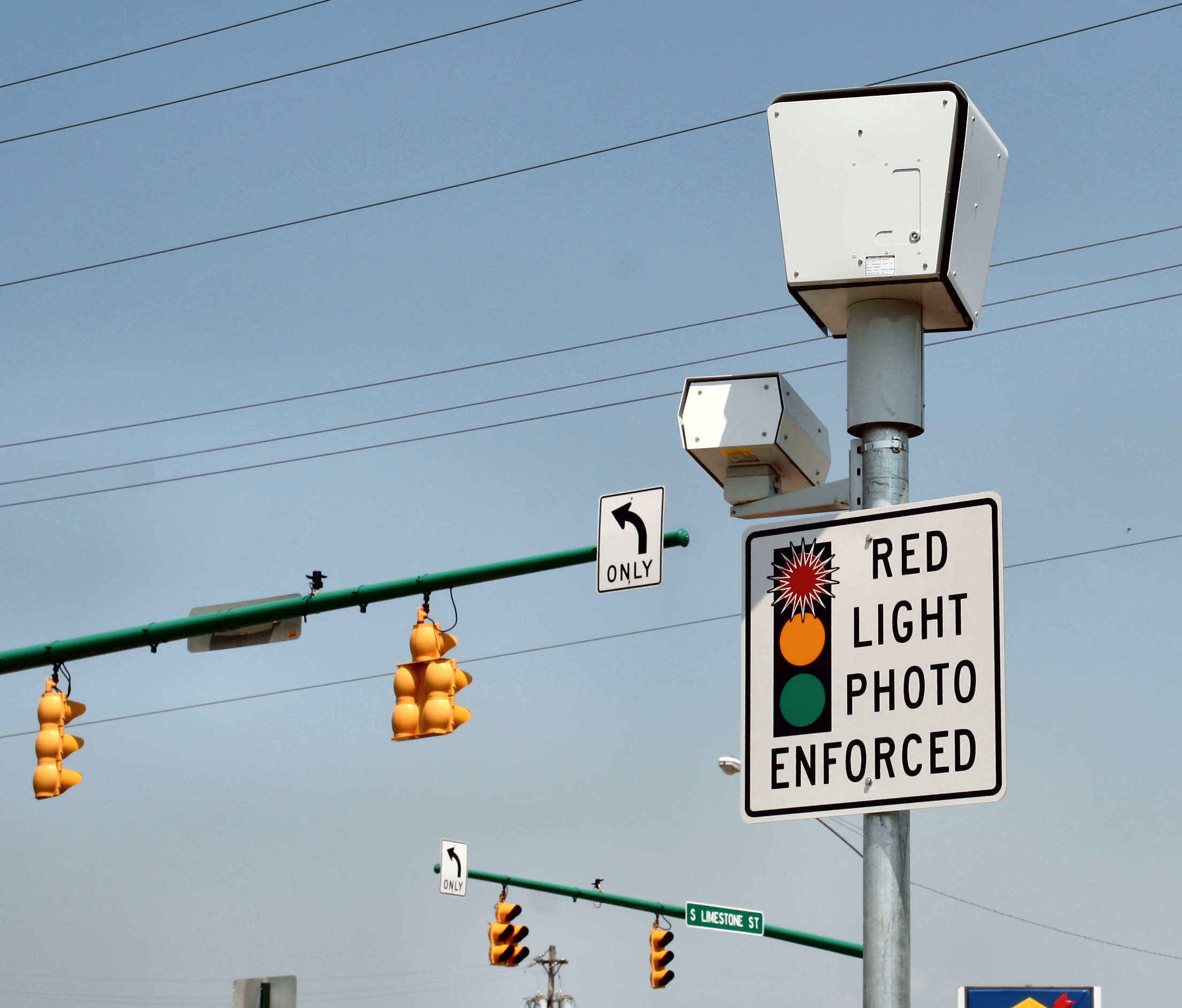Time to continue my series on traffic signals with the red-hot topic, the right turn on red, and some ideas for improving things.
The Right Turn on Red
We all know right turn on red (RTOR) is extremely dangerous, leading to motorists mowing down workers carrying plate-glass and old ladies pushing baby buggies. Or is it? Well, it seems to lead to a lot of aggressive behavior from both motorists and pedestrians, which has been well documented here on streets.mn and even noted in official studies, but actual crash data shows it’s very safe.
California, with its wide streets and auto-centric culture, has had RTOR since 1939. The first study was in 1956 by James C. Ray in San Francisco, Berkeley, and Richmond which found just 0.3% of intersection crashes involved a RTOR. Also of note: RTOR maneuvers involved 11% of the right turning crashes but 18% of the total right turns (And the same motorists that can’t make a RTOR would make a right turn on green during the next phase, which has the issue of motorists not yielding to pedestrians, along with much higher speeds).
https://www.flickr.com/photos/raymondyue/7130681045/sizes/o/
Later studies have similar results. For vehicle vs. vehicle crashes, a National Highway Traffic Safety Administration (NHTSA) 1989-1992 study of Illinois, Indiana, Maryland, and Missouri (selected because crash reports from those states included data on whether a RTOR maneuver was being performed) found they amounted to 0.05%, of all injury crashes, and 0.06% of all fatal crashes. A 1994-1996 study limited to San Francisco found they amounted to 0.45% of all intersection crashes.
Nor do things change much for car vs. pedestrian crashes. A 1994-1998 San Francisco study (to determine if RTOR should be banned citywide) by Jack L. Fleck and Bond M. Yee showed just 0.8% of all car vs pedestrian crashes involved a RTOR maneuver. To try to see if there may have been some problems with reporting, they picked 100 random car vs pedestrian crashes to analyze in detail. They found that of the 25 that occurred at signalized intersections, zero involved right turn on red and 12 involved right turn on green. Quebec, long the lone holdout against RTOR, finally allowed them in 2003 after reviewing the studies.
There are some conflicting data: one study of several states (by Paul Zador, Jack Moshman, and Leo Marcus) showed that when RTOR was enacted crashes at intersections increased 20.7% from what they would have been but there was no significant change in severe or incapacitating crashes. A similar before/after study by Claude Dussault had similar results. One possible explanation for the discrepancy is a learning curve from both motorists and pedestrians, and that when the law was changed there were specific intersections that should have had restrictions that hadn’t been identified and so marked yet.
I acknowledge the possibility that a lot of very minor crashes between cars and pedestrian are not reported. This is not something I’ve personally observed (I’m rarely outside a car unless I’m on recreational trails which tend to have few signalized intersections and I try to avoid driving in pedestrian heavy areas if at all possible). However there have been no studies on this, just anecdotes, and thus I can’t support or refute them since there’s no data on how common they are in objective terms. No one chimes in and says “I was not knocked over by a car today”. Maybe that’s a good area for a future study?

The MUTCD Speaks
Here are the MUTCD guidelines for NTOR, section 2B.54 03:
A No Turn on Red sign should be considered when an engineering study finds that one or more of the following conditions exists:
- Inadequate sight distance to vehicles approaching from the left (or right, if applicable);
- Geometrics or operational characteristics of the intersection that might result in unexpected conflicts;
- An exclusive pedestrian phase;
- An unacceptable number of pedestrian conflicts with right-turn-on-red maneuvers, especially involving children, older pedestrians, or persons with disabilities;
- More than three right-turn-on-red accidents reported in a 12-month period for the particular approach; or
- The skew angle of the intersecting roadways creates difficulty for drivers to see traffic approaching from their left.
For a long time there was a no RTOR at Lyndale Avenue and 66th Street, but this was removed because there wasn’t engineering justification. Of course this specific example is soon going to be a roundabout…

Lyndale Avenue at 66th Street
“Unacceptable number of pedestrian conflicts” is kind of subjective, so if they really wanted to keep the ban it they might have been able to justify it here, and I agree this might be a good place for one. And this is only a recommended practice (The MUTCD has three levels of guidelines: “May”= Optional, “Should”=Recommended, and “Shall”= Required). San Francisco, in fact, bans RTOR in some places just to prevent motorists from inching into the crosswalk. .
But take another kind of intersection: If you ban right turns from a shopping mall to a wide suburban style road, traffic on the main road has to screech to a halt every time a motorist wants to turn out of the mall, and there’s probably not a pedestrian there and hasn’t been for the past hour. When you count all the suburban intersections around, there are probably more places they should allow RTOR than shouldn’t.

MN 252 at 85th Ave N, no reason to ban RTOR here. Pedestrians aren’t even allowed at street level because of the pedestrian bridge.
My Own Thoughts
1) As should be obvious by now, due to the improved LOS for motorists and the preponderance of studies indicating it is actually extremely safe, I fully support allowing RTOR where appropriate.
2) I don’t like city-specific bans like NYC, or Montreal where you have to be aware of different rules of the road. This diverges from everything we’re trying to accomplish now with standardization, and I think NYC can afford signs at this point.

3) As for whether the problem of motorists making illegal turns where banned is an engineering problem, enforcement problem, or both, I don’t know. Lighted blankout signs grab your attention, but have typically been used only at specific times of day, or when there’s a train on adjacent tracks. We use lighted indications for everything but a NTOR prohibition, so while not excusing bad driving, it’s understandable why it’s sometimes hard to see.

First Free Idea: Flashing Yellow Arrows for Right Turns
Directly related to the problems with right turning traffic at intersections, I propose increased use and modification of four section arrow heads on the right to try to make intersections safer.
The states that allow a right turn on a red arrow would have to change, and the MUTCD would have to allow a flashing red arrow, but this is how I see it operating:
- Green Arrow: Go, no conflicting vehicle or pedestrian phases
- Flashing Yellow Arrow: Yield to pedestrians or vehicles
- Red Arrow: Stop and do not turn / Flashing Red Arrow: Stop and turn if safe
A four section head with a red ball on top is already legal if the intent is to allow RTOR, but I would prefer that we narrow the meanings of red balls , just as we are for green balls.

Three section flashing yellow arrow heads are now permissible, but installing a standard 4-section head may be more problematic when physically mounted on the post for right turns. The lack of positional change from a flashing yellow to a steady yellow would be mitigated because the through signals would always change at the same time. It seems motorists have a problem with the “yield to pedestrians” on a green ball, just like they do for “yield to oncoming traffic”on a green ball.
Second Free Idea: Ditch the Pedestrian Change Interval
The idea for a pedestrian signal got started when streets got wider, traffic got faster, and things got more dangerous for pedestrians stranded in the intersection when the light changed. So the “Walk” light was added to tell pedestrians when it was safe to leave the curb.

Early pedestrian accommodations, first with the green lens designed to throw some light downward, then with the separate “Walk” lens
Since then, we’ve added the “Don’t Walk” and countdowns, but we’re still telling pedestrians that we’re the better judge than they are if they can make it across. And the long clearance interval, designed to accommodate the slowest of pedestrians, encourages jaywalking and disrespect for traffic control devices, and destroys the LOS for law-abiding pedestrians.
Now that we have countdowns, what about eliminating change interval entirely and let pedestrians use their own judgement as to whether they can make it across the intersection? An 80-year old has a different crossing speed than a bicycle on the sidewalk or a multi-use path, but they are treated all the same. The countdown would start at the beginning of the Walk Interval, then count down to the buffer. We could extend the buffer a bit if we wanted to (but making it too long would again encourage jaywalking and reduce LOS). An eight second buffer, rather than the standard three, would allow 10 seconds of the red hand before the light turns green for cross-traffic. Even at a narrow intersection, you could probably triple the walk interval. If a visually impaired person pushed a button, it could say “20 seconds left, Penn Avenue is 45 feet wide”. Would this increase crashes? I don’t know.
Third Free Idea: Bring Back Red Light Cameras.
To put it bluntly, as much as I like cars and driving, I have no tolerance for motorists that deliberately break the law and in 20 years of driving I’ve never been cited. One of my most satisfying moments was driving home from Biwabik and another motorist was tailgating me when I was driving the speed limit. I pulled over to let him pass, he zoomed by, and 10 miles later I passed him again he was pulled over by a cop. Red light cameras would also address the problem of motorists illegally turning on red where it isn’t and should not be allowed.
What sunk the initial red light camera program was that the Minnesota cameras only photographed the license plate, and it was a crime (a petty misdemeanor). The courts ruled that you couldn’t charge the owner of a car with a crime unless you had photographic proof it was them driving. The city of Chicago, with its extensive program, treats red light camera tickets as an infraction, along the lines of a parking ticket, and doing so here would likely be OK with the courts as we don’t require proof it was the owner that parked at that expired meter.

In the future I may write about such topics as the evolution of LED pedestrian modules or, but this concludes the “series within a series” of traffic signal controllers and questions.
